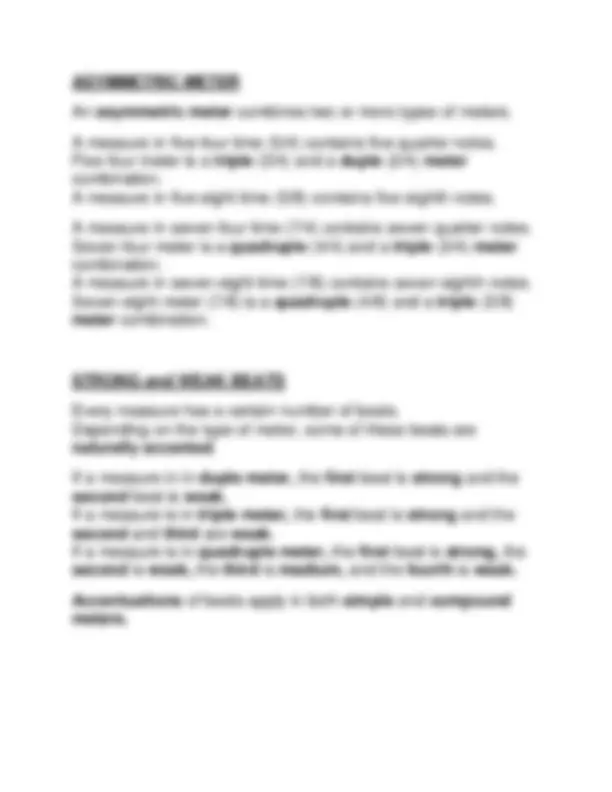




Study with the several resources on Docsity

Earn points by helping other students or get them with a premium plan


Prepare for your exams
Study with the several resources on Docsity

Earn points to download
Earn points by helping other students or get them with a premium plan
Community
Ask the community for help and clear up your study doubts
Discover the best universities in your country according to Docsity users
Free resources
Download our free guides on studying techniques, anxiety management strategies, and thesis advice from Docsity tutors
This document delves into the intriguing relationship between music and mathematics, focusing on the use of note values, time signatures, and meters to structure and count music. Learn about simple and compound meters, as well as asymmetric meters, and discover how the length of notes and the division of beats impact the overall rhythm and structure of a musical composition.
What you will learn
Typology: Study notes
1 / 4

This page cannot be seen from the preview
Don't miss anything!



The following information contains some important vocabulary words and short explanations of how math numbers are used to tell musicians how to count music.
The length of time that a note lasts is determined by a note value. They are differed by using the color of the note head, the presence or absence of a stem, and the presence or absence of a flag.
TIME SIGNATURES
Vertical lines called bar lines divide the staff into measures. Time signatures make it possible to know the amount and type of notes that each measure contains.
The terms duple, triple, and quadruple refer to the number of beats that each measure contains. The term simple means that each of those beats can be divided into two equal notes.
Two-four time (2/4) is classified as simple duple meter. Duple: there are two beats per measure. Simple: each beat can be divided into two equal notes. Two-two time (2/2) sometimes called cut-time , is also an example of simple duple meter.
Three-four time (3/4) is classified as simple triple meter. Triple: there are three beats per measure. Four-four time (4/4) is classified as simple quadruple meter. Quadruple: there are four beats per measure.
A time signature in simple meter always has a 2, a 3, or a 4 in the numerator.
While beats in simple meter are divided into two notes, beats in compound meter are divided into three notes.
Six-eight time (6/8) is classified as compound duple meter. Compound: each beat can be divided into three equal notes. Six-four time (6/4) is also an example of compound duple meter.
Nine-eight time (9/8) is classified as compound triple meter. Triple: there are three beats per measure. Compound: each beat can be divided into three equal notes. Nine-four time (9/4) is also an example of compound triple meter.
Twelve-eight time (12/8) is classified as compound quadruple meter. Quadruple: there are four beats per measure. Twelve-four time (12/4) is an example of compound quadruple meter.
A time signature in compound meter always has a 6, a 9, or a 12 in the numerator.